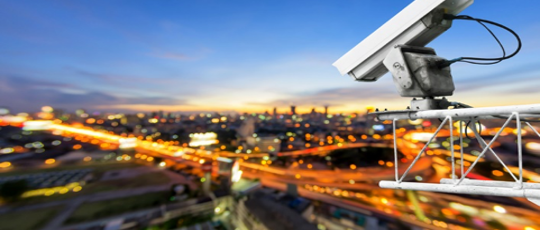
How to improve your physical security with video analytics in 4 simple steps
Posted on September 29, 2016 by TheStorageChap in Big Data and Analytics, Security, VideoIt seems as if security threats have become an unfortunate part of our everyday personal and professional lives these days. In the last month we’ve seen hackers defeat the new iPhone’s security measures, Olympians personal medical data released as part of the Fancy Bears hack; as well as bomb attacks in New York.
Here at Dell EMC we know a lot about using data analytics to detect and investigate advanced threats, thanks to our RSA Security Analytics and Dell Secureworks expertise. The role of data analytics in monitoring and highlighting inconsistencies in a company’s online and on-premise data patterns and activities is clear. But we also know that there is a lot video analytics can do to support security in the physical world through video surveillance.
Organisations who trade upon security, such as the police, transport hubs (like airports) and high security buildings (such as global corporate headquarters or large financial institutions) should be following these four steps to ensure that they remain physically secure:
- Pool footage & data from third parties – Of course most organisations have their own video surveillance cameras to monitor for suspicious people, objects or behaviour immediately around their building. But if they are able to access video or data from third-parties in the wider vicinity of their building then they can detect threats well-ahead of time and stop threats become fully-blown security incidents. For example, video footage from public transport routes that run next to your building could alert you to a suspicious group of individuals travelling towards you and ANPR data could provide details about drivers before they even reached your security gate house.
- Automate video surveillance – Having access to footage is just one half of the equation. To make that footage work for you, you have to be able to analyse it. But using traditional methods, i.e. human eyeballs and lots of patience, makes this a very lengthily process. To put it into perspective, the Met Police had to spend 5 months watching 20,000 hours of CCTV footage to identify 5,000 offenders in the 2011 London riots. Luckily video analytics technology now exists to automate, simplify & dramatically speed up this process, allowing AI to analyse footage for faces, movement and even trainers up to 12 times quicker than a human.
- Invest in the storage to collate, classify and analyse all this information – However, automating this kind of work requires significant digital power, particularly when you take into account all the data security and protection legislation that has to be complied with. Organisations need to invest in an infrastructure that will allow them to collate information from different sources, classify and store it appropriately and analyse it in real-time. Dell EMC’s Isilon and Data Lakes solutions are proving a particularly popular way of doing this, as they eliminate the challenges of extract/transfer/load times and reduce the cost and complexity of big data programmes.
- Collaborate with like-minded organisations – More often than not systems are used in the same areas independently of each other, covering the same space, using different networks or fibre for the same person. But if we’re all aiming for the same thing, why aren’t we doing it together? Collaborating with liked-minded organisations will not only reduce the cost of such initiatives but also allow you to collect even more relevant data. The town of Rugby has been doing this successfully for a while. The public space CCTV is funded by local businesses – the maintenance, network costs, staffing costs and so on. It is then operated by an independent organisation, Rugby First, but as an agent of the Local Authority. Whilst not sharing networks they work closely with the police and businesses to target any possibly suspicious behaviour.
There is of course a much wider debate to be had around the personal implications of video surveillance but given the UK already has 5.9 million CCTV cameras watching over the nation – it seems crazy not to use it as efficiently as possible while that argument takes its course.
Discussion · No Comments
There are no responses to "How to improve your physical security with video analytics in 4 simple steps".No one has posted a comment on this post yet. Start the discussion!
Leave a Comment